Featured
Products
-

Lowest Price for Third Eye Crystals - Natural Cordierite Loose Gems Round Cut 1.0mm – Datianshanbian
Product Detail: Cordierite is a silicate mineral, usually light blue or light purple, glassy luster, transparent to translucent. Cordierite also has the characteristic of being remarkably polychromatic (tricolor), emitting light of different colors in different directions. Cordierite is usually cut into traditional shapes, and the most popular color is blue-purple. Cordierite is similar in color to sapphire, so it is also called water sapphire. Nicknamed the poor man’s sapphire because ... -
Chinese wholesale Natural Ruby Loose Stone - Natrual Ruby Loose Gems Baguette 1.5x3mm – Datianshanbian
Product Detail: Ruby [1] , which means corundum of a red color, is a type of corundum and consists primarily of aluminum oxide (AL 2O 3) . The red color comes from chromium (CR) , mainly Cr2O3, the content is generally 0.1 ~ 3% , the highest is 4% . Containing Fe, Ti and blue said Sapphire, non-chromium CR color of other colors of corundum also collectively known as Sapphire. Most natural rubies come from Asia (Burma, Thailand, Sri Lanka, Pakistan, China Xinjiang, China Yunnan, etc.) , Africa... -
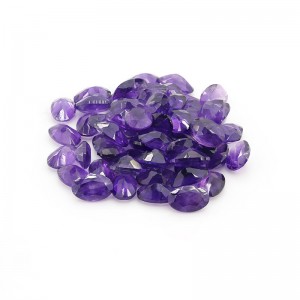
Fast delivery December Tanzanite - Amethyst is the birthstone of February and symbolizes loyalty – Datianshanbian
Product Detail: Amethyst is a tripartite crystal system, the crystal is hexagonal columnar, the cylindrical surface is transverse, there are left shape and right shape, twin-crystal is very common. The hardness is 7. The crystal often contains irregular or winged gas-liquid inclusions. It is one of the most expensive members of the crystal family, because the water crystal contains Mn, Fe3+ and appears purple. Transparent, with obvious polychromatism observed under dichromatic mirror. The ame... -
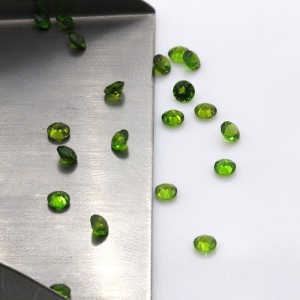
PriceList for Siberian Chrome Diopside - Size 1.0mm Round Cut Natural Diopside Loose Gems Crystal Clean – Datianshanbian
Product Detail: The common color of diopside is blue-green to yellow-green, brown, yellow, purple, colorless to white. Luster for glass luster. If chromium is present in diopside, the mineral has a green tinge, so diopside gems are often confused with other gems such as yellow-green olivine, (green) tourmaline, and chrysoberite, which of course depend on other physical differences between the minerals to distinguish them. Some diopside may also have cat’s eye; Such gems, such as quartz,... -
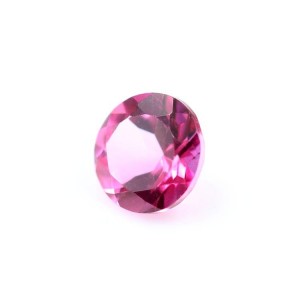
Low price for Garnet Jewelry - Natural Topaz Round Bare Stone Necklace Set With Stone – Datianshanbian
Product Detail: Topaz is pure transparent but often opaque due to impurities in it. Topaz is typically wine-colored or pale yellow. But it could be white, gray, blue, green. Colorless topaz, when well cut, can be mistaken for a diamond. Coloured topaz may be less stable or discoloured by sunlight. Among them, the best deep yellow is the most valuable, the yellower the better. Followed by blue, green and red. Both natural and modified topaz stones are evaluated by color, clarity and weight. Da... -

Manufacturer for Russian Chrome Diopside - Size 1.0mm Round Cut Natural Diopside Loose Gems Crystal Clean – Datianshanbian
Product Detail: The common color of diopside is blue-green to yellow-green, brown, yellow, purple, colorless to white. Luster for glass luster. If chromium is present in diopside, the mineral has a green tinge, so diopside gems are often confused with other gems such as yellow-green olivine, (green) tourmaline, and chrysoberite, which of course depend on other physical differences between the minerals to distinguish them. Some diopside may also have cat’s eye; Such gems, such as quartz,... -

Original Factory Natural Unheated Tanzanite - Amethyst is the birthstone of February and symbolizes loyalty – Datianshanbian
Product Detail: Amethyst is a tripartite crystal system, the crystal is hexagonal columnar, the cylindrical surface is transverse, there are left shape and right shape, twin-crystal is very common. The hardness is 7. The crystal often contains irregular or winged gas-liquid inclusions. It is one of the most expensive members of the crystal family, because the water crystal contains Mn, Fe3+ and appears purple. Transparent, with obvious polychromatism observed under dichromatic mirror. The ame... -
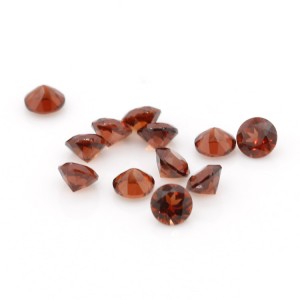
Reasonable price Harga Batu Garnet - Natrual Gems Yellow Garnet Round 3.0mm – Datianshanbian
Product Detail: Garnet, called ziyawu or ziyawu in ancient China, is a group of minerals that have been used as gemstones and abrasives in the bronze age. The common garnet is red. Garnet English “garnet” comes from Latin “granatus” (grain), which may come from “Punica granatum” (pomegranate). It is a plant with red seeds, and its shape, size and color are similar to some garnet crystals. The common garnets are classified into six types according to their c... -

Bottom price Synthetic Cubic Zirconia Harga - Amethyst is the birthstone of February and symbolizes loyalty – Datianshanbian
Product Detail: Amethyst is a tripartite crystal system, the crystal is hexagonal columnar, the cylindrical surface is transverse, there are left shape and right shape, twin-crystal is very common. The hardness is 7. The crystal often contains irregular or winged gas-liquid inclusions. It is one of the most expensive members of the crystal family, because the water crystal contains Mn, Fe3+ and appears purple. Transparent, with obvious polychromatism observed under dichromatic mirror. The ame... -

Professional China Amethyst Geode - Natural Cordierite Loose Gems Round Cut 1.0mm – Datianshanbian
Product Detail: Cordierite is a silicate mineral, usually light blue or light purple, glassy luster, transparent to translucent. Cordierite also has the characteristic of being remarkably polychromatic (tricolor), emitting light of different colors in different directions. Cordierite is usually cut into traditional shapes, and the most popular color is blue-purple. Cordierite is similar in color to sapphire, so it is also called water sapphire. Nicknamed the poor man’s sapphire because ... -

Chinese wholesale Diopside Raw - Size 1.0mm Round Cut Natural Diopside Loose Gems Crystal Clean – Datianshanbian
Product Detail: The common color of diopside is blue-green to yellow-green, brown, yellow, purple, colorless to white. Luster for glass luster. If chromium is present in diopside, the mineral has a green tinge, so diopside gems are often confused with other gems such as yellow-green olivine, (green) tourmaline, and chrysoberite, which of course depend on other physical differences between the minerals to distinguish them. Some diopside may also have cat’s eye; Such gems, such as quartz,... -
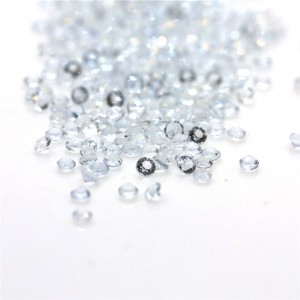
China wholesale Aquamarine Crystal - Natrual Aquamarine Loose Gems Round Cut 0.8mm – Datianshanbian
Product Detail: Aquamarine quality is evaluated from color, clarity, cut and weight. Pure color, no gray, no dichroism, thick and bright color of the highest value. Some aquamarine with directional inclusions can be processed into cat’s eye effect or starlight effect, and aquamarine with special optical effect is more expensive. Aquamarine with the same color, clarity and cut is more valuable if it weighs more. Aquamarine is a beryllium, aluminum silicate, together with Wulan gemelline,...






